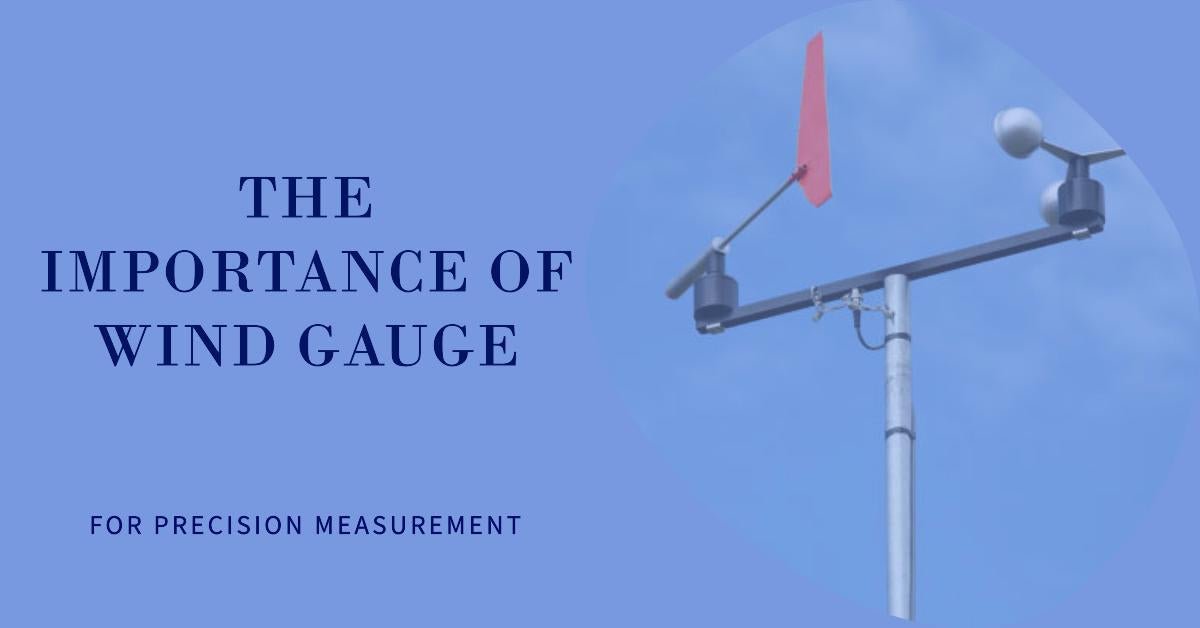In the world of track and field, precision is paramount. Athletes and coaches strive for excellence, pushing the boundaries of human performance. However, an often overlooked factor that can significantly influence outcomes is the environment, specifically the wind. This blog delves into the critical role of wind gauges in ensuring fair and accurate competition. This blog will guide readers through the intricacies of wind measurement, from the basic functionality of wind gauges to their profound impact on track and field events, highlighting the necessity of precise wind data for fair competition and optimal athlete performance.
The Role of Wind Gauges in Track and Field
Wind gauges, crucial tools in track and field, measure wind speed and direction, profoundly influencing athletes' performances and competition fairness. Understanding these devices' functionality unveils their significance in assessing conditions that affect race times, jumps, and throws. Wind can either be a substantial aid or a challenging adversary, potentially altering the outcome of events. Thus, accurate wind measurement becomes vital, ensuring that all athletes compete on a level playing field. By integrating precise data from wind gauges, event officials can validate records and performances, adhering to regulations that require specific wind conditions. This emphasis on accuracy not only upholds the integrity of competition but also enhances the training process, allowing athletes and coaches to fine-tune strategies under varying conditions.
Understanding Wind Gauges and Their Functionality
Wind gauges, essential for track and field competitions, measure the speed and direction of the wind. This measurement is crucial as it affects athletes' performances, especially in events like sprinting and long jump. Modern wind gauges use ultrasonic sensors or mechanical cups to capture wind data accurately, providing real-time feedback to officials and competitors.
How Wind Affects Track and Field Events
Wind plays a significant role in track and field events by either aiding or hindering athletes' performances. Tailwinds can propel athletes faster, potentially improving times in sprints and distances in jumps. Conversely, headwinds can slow athletes down, requiring more effort to achieve their best performances. The impact of wind varies across disciplines, making its measurement vital for fairness and record validation.
The Importance of Accurate Wind Measurement
Accurate wind measurement ensures fairness in competitions, as wind speeds exceeding certain limits can disqualify record-setting performances. It's also crucial for training, allowing athletes to understand how wind conditions affect their performance. Furthermore, consistent wind measurement practices across competitions ensure that all performances are judged on a level playing field, maintaining the sport's integrity.
Precision Measurement for Fair Competition
Precision measurement tools like wind gauges are indispensable in track and field to maintain fairness. They ensure that all athletes compete under similar conditions, especially in events where wind can significantly affect performance.
Ensuring Fairness in Competitions with Wind Gauges
Wind gauge help in standardizing competitions by providing accurate wind speed measurements. These readings are crucial for events like sprinting and long jump, where wind can influence the athletes' performance. By measuring wind speed, officials can determine if conditions are within acceptable limits for records to be considered official, thus ensuring fairness.
The Impact of Wind on Performance Metrics
Wind speeds can either aid or hinder athletes' performance. Tailwinds can boost sprinters' speed, while headwinds can reduce it. In jumping events, tailwinds can aid in longer jumps. Therefore, understanding and measuring the wind's impact are essential to evaluate performances fairly and accurately.
Types of Wind Gauges and Their Features
Wind gauges, crucial for measuring wind speed and direction, come in various types, each designed to offer precision and reliability under different conditions. From traditional analog devices to sophisticated digital systems, these tools are integral in ensuring fair competition and accurate record-keeping in track and field. Features such as real-time data transmission, durability in various weather conditions, and compatibility with other measurement tools enhance their utility. The evolution of these devices reflects broader technological advancements, integrating more seamlessly with software for data analysis and athlete training programs.
An Overview of Different Wind Gauge Models
We start by exploring various wind gauge models tailored for track and field events. From basic analog models to sophisticated digital units, each serves a unique purpose and environment, ensuring precise wind speed and direction measurements.
Advanced Features in Modern Wind Gauges
Modern wind gauges boast features like wireless connectivity, real-time data transmission to devices, and integration with competition management software. These advancements enable immediate adjustments and informed decision-making during events and training.
Choosing the Right Wind Gauge for Your Needs
Selecting an appropriate wind gauge involves considering factors such as the level of precision required, environmental conditions, and the specific needs of athletes and coaches. Recommendations will be provided for different scenarios, ensuring that readers can make an informed choice that enhances athletic performance and competition fairness.
Implementing Wind Gauges in Training and Competitions
Implementing wind gauges in training and competitions involves strategic placement for accurate readings, adapting training to teach athletes how to perform under different wind conditions, and utilizing the latest advancements in wind measurement technology. This approach not only prepares athletes for the variability of competitive environments but also ensures the fairness and accuracy of competitions. As technology evolves, so too will the methods for wind measurement in athletics, potentially incorporating real-time analytics and predictive modeling to further refine training and competitive strategies.
Best Practices for Setting Up Wind Gauges
To ensure the most accurate and reliable wind measurements, it is crucial to place wind gauges in strategic locations. This involves setting them up away from obstacles that could obstruct airflow, at the recommended height off the ground as per governing athletics bodies' guidelines, and in a manner that aligns with the direction of prevailing winds during events.
Training Athletes to Compete in Varying Wind Conditions
Athletes can benefit immensely from training under diverse wind conditions to prepare for the unpredictability of competition environments. Coaches can simulate various scenarios using wind gauges to teach athletes how to adjust their techniques accordingly. This adaptive training helps in improving performance and developing strategies to counteract the impact of wind.
The Future of Wind Measurement in Athletics
The evolution of technology promises more sophisticated wind measuring tools, integrating advanced sensors, real-time data analytics, and perhaps even AI to predict and analyze wind patterns more accurately. This progression aims to enhance the fairness and precision of competitions, providing athletes and coaches with invaluable insights for training and strategic planning.
Conclusion
In conclusion, navigating the elements with precision equipment like wind gauges and exploring the science behind athletic gear unveils the profound impact of technology on track and field. From aerodynamic apparel that slices through air to footwear engineered for ultimate traction, and wearable tech that offers real-time performance insights, each advancement represents a leap towards excellence. This journey through the essentials and beyond at TrackBarn not only equips athletes for success but also showcases the symbiotic relationship between innovation and athletic achievement.
Frequently Asked Questions
What is the importance of wind gauges in track and field events?
Wind gauges are crucial for ensuring fair competition by accurately measuring wind speed, which can significantly impact athletes' performances, especially in sprinting and jumping events.
How do advancements in footwear technology enhance athlete performance?
Innovations in shoe technology, such as improved traction, energy return systems, and lightweight materials, contribute to better speed, stability, and overall performance.
Can wearable technology truly improve training outcomes for athletes?
Yes, wearables provide real-time data on physical performance and health metrics, allowing for personalized training adjustments and improved performance monitoring.
Why is aerodynamic apparel important in track and field?
Aerodynamically optimized apparel reduces air resistance, enabling athletes to move more efficiently and faster, which can be critical in achieving top performances.
How does TrackBarn support athletes in choosing the right equipment?
TrackBarn offers a wide range of specialized equipment and apparel, along with expert advice to help athletes select gear that best meets their specific needs and enhances their performance.
